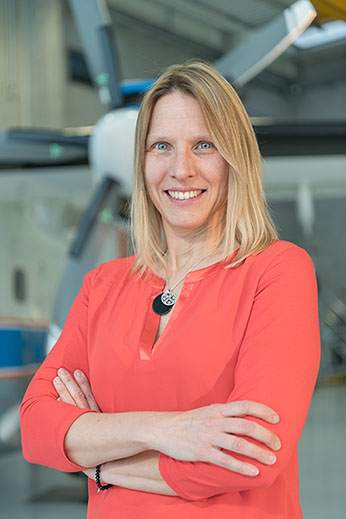Cutting carbon emissions is one of several ways that aviation can help to slow climate change, explains Dr Sigrun Matthes, atmospheric physicist with Germany’s DLR research institute and researcher in the SESAR 3 JU FlyATM4E exploratory research project. Recent analysis shows controlling both CO2 emissions and non-CO2 effects has the potential to double the benefits available from reducing carbon emissions alone, and within a much shorter time frame than that envisaged for sustainable aviation fuel.

How will FlyATM4E lead to greener skies?
FlyATM4E exploratory research is examining non-CO2 effects such as contrails and contrail-cirrus, water vapour, nitrous oxide (NOx) and particulate emissions to identify where there is potential to reduce the climate impact. Non-CO2 effects are strongly dependent on the weather and vary considerably according to atmospheric conditions such as air temperature and altitude. This uncertainty far exceeds that of CO2 emissions which are the direct result of events like route length, taxi time and wind strength.
Every aircraft has access to weather information, and it is the expansion of this interface with meteorological data that provides the opportunity to develop climate-optimised trajectories in collaboration with air traffic control with the help of advanced MET data products on climate effects.
What are the effects of non-CO2 emissions?
Non-CO2 effects, such as contrail cirrus clouds (ice crystals that form behind an aircraft) and NOx-induced changes of ozone and methane, upset the radiative balance of the atmosphere. They can cause both warming and cooling effects and, unlike CO2, do not follow a linear pattern but contribute to both positive and negative Effective Radiative Forcing (ERF). FlyATM4E is researching the synoptic patterns that trigger the formation of effects such as persistent contrails, and the temporal and spatial factors that determine whether NOx emissions will lead to warming or cooling effects in the atmosphere. The analysis creates an air traffic management-oriented weather chart to show where the climate impact is high.
How can non-CO2 effects be reduced?
FlyATM4E is using data from different sources including numerical weather forecast and reanalysis data, and earth-system climate models to identify particular weather situations that are more favourable for reducing climate change effects. Specifically, the research is looking at which days during different seasons and under what synoptic patterns there are opportunities for mitigation gain. Improving the quality of the forecast model brings more certainty to planning a robust mitigation strategy.
Prototype algorithms provide a link between the meteorological data and the climate effect of individual emissions to enable the flight planner to check the trajectory and assess the climate impact. FlyATM4E aims to make this data service available as a SESAR solution to help airspace users and air navigation service providers select climate-optimised trajectories. There is still a high degree of uncertainty and a need for additional modelling to establish a robust model. By collaboration with other research initiatives aiming to use these prototype in live trials, project partners expect to mature the technology and identify some of the ‘big hits’.
What are the potential benefits?
Managing non-CO2 effects represents an important part of reducing aviation’s total environmental footprint. This is estimated to amount to about 5% of total anthropogenic change, with approximately half caused by CO2 emissions and half from the effects of non-CO2 emissions.
A feasibility study in a one day case study has assessed how small flight detours avoid the formation of persistent contrail cirrus and NOx-induced effects, reducing the total climate impact on that specific by more than 40% with a small 0.5% increase of fuel. However, large uncertainties in these results still prevail. By modelling these climate impact metrics in multiple environments including trans-Atlantic routes, FlyATM4E is aiming to identify sufficiently robust meteorological strategies capable of supporting eco-efficient routes with climate-optimised aircraft trajectories and large mitigation potential.
(1)International Panel on Climate Change (IPCC)
(2)International Energy Agency (IEA)
This project has received funding from the SESAR Joint Undertaking under the European Union's Horizon 2020 research and innovation programme under grant agreement No 891317
